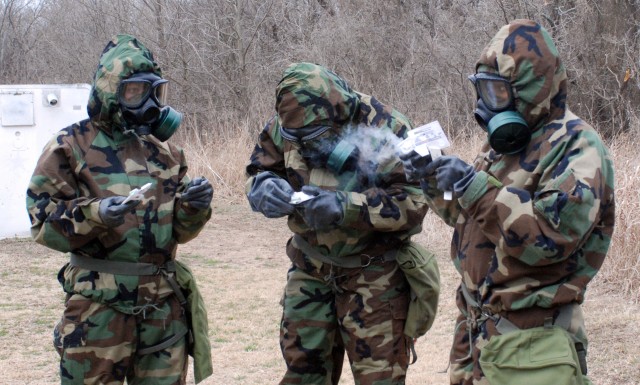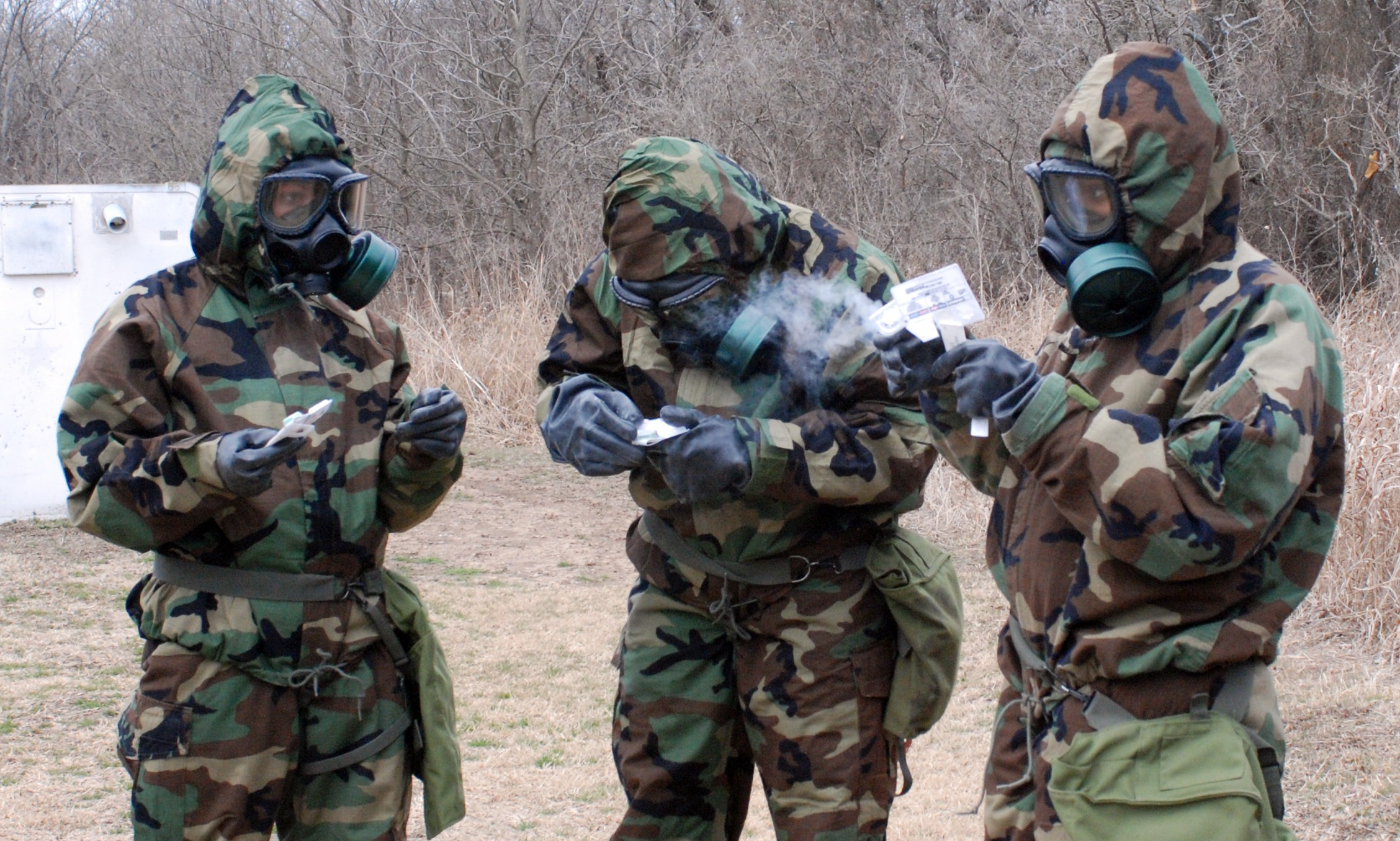FORT SILL, Okla. - The Soldiers gathered around the disabled vehicle, paying close attention to the door handle as the leader coated its surface in a light gray dust, taken from the bag in his hand, which closely resembled a pouch from a meal ready-to-eat.
In this first stage of chemical, biological, radiological, and nuclear agent training, Soldiers of the 168th Brigade Support Battalion and the 529th Signal Company learned the proper procedures for decontaminating surfaces during chemical attacks.
"Inside of this bag is a powder, like in an MRE, but you can't eat this," said the instructor, who was closest to the vehicle.
"You can't eat [MREs], either," quipped a Soldier in the back.
The group's muffled laughter barely escaped the thick, protective barrier of gas masks and safety suits required for the multi-stage event.
Following a demonstration and a practical exercise, the group of Soldiers moved on to the next station: chemical, nerve, blister, and blood agents. Though not actually exposed to any of these deadly substances, they learned how to identify which could be present in the environment using an M256A1 chemical agent detector kit.
Other instructional areas included administration of the Mark 1 nerve agent antidote kit, an exercise where Soldiers were exposed to tear gas inside a nuclear, biological and chemical chamber, all of which was followed by a comprehensive decontamination procedure.
The purpose of the exercise is two-fold, said Staff Sgt. Robert D. Leigey, the battalion CBRN NCO for the 168th BSB, who believes much of his professional knowledge is perishable.
"Not only is it training for the Soldiers, it also helps myself and other [chemical operations specialists] in the battalion to stay current with their training," he said. "If you don't use it, you will lose it, and that's one of the biggest problems we have."
Ample opportunity exists to maintain these skills, he contends, as resources are usually available. The problem, said Lt. Col. Darnell Jones, the 168th BSB commander, is that other combat dangers are more prevalent.
"I think our training is designed to be relevant to what we're doing," said Jones.
"Would you like to have more' You'd like to have more of everything," he continued.
While the regularity of hazardous agent training is less than that of more critical battlefield concerns, both Jones and Leigey are happy with the quality of the training they do see.
"What SSG Leigey laid out was an excellent training event. He took them through all of the tasks you have to perform in that environment, not just the gas chamber," said Jones.
As the battalion CBRN NCO and the NCOIC of the training event, Leigey supervised each stage of the field problem and believes the time spent on these exercises adds real value to the battle efficiency of modern Soldiers.
"If you actually get into an environment of this sort, or a contamination area, you're probably going to want to know how to do this stuff because your life may depend on it," he said.


Social Sharing